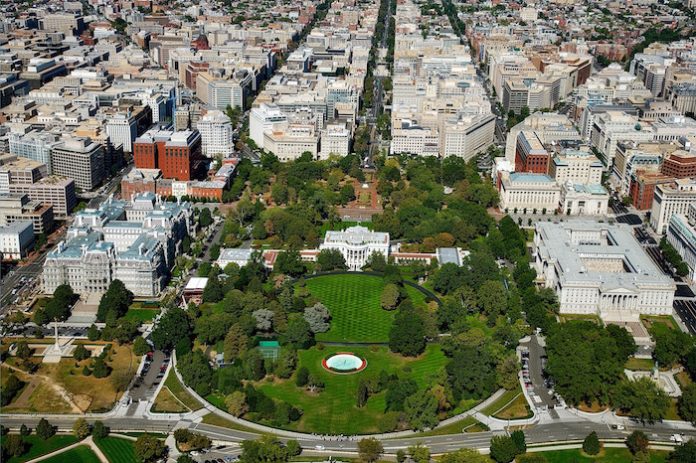It is very common for kids to visit Washington, D.C., in seventh or eighth grade. It is also surprisingly common for adults to move here to work. They may be coming here to start their career at one of many nonprofits, especially the nonprofit headquarters that dot the area. They may be trying to enter politics in some regard, whether they’re going to work in civil service or campaigning. Others move to the area so that they can work at the many defense plants and research firms. Regardless of why you’re moving here, here’s what you should know before moving to Washington, D.C., for work.
It Is Expensive
Washington, D.C., makes the list of the ten most expensive metro areas in the United States. San Francisco and New York City are the worst, with Seattle and Boston not far behind. Then Washington, D.C., makes the list. The average rent for an apartment in Washington, D.C., is 2200 to 2300 dollars for a 700- to 800-square-foot apartment. A small one-bedroom apartment easily costs 1300 dollars. Less than 2 percent of apartments in the area cost less than a thousand dollars to rent. Rents are steadily growing at a rate faster than inflation, because so many move here for work and school. The rental market is also inflated by the sheer number of people who visit for long-term business. This drives up rents while contributing to more than 50 percent of people in D.C. renting.
Quality of Life Is Great If You Live in the Right Place
Washington, D.C., can offer a great quality of life if you live in a safe neighborhood. This metro area has the greatest concentration of museums and cultural centers in the country. Unlike New York, many of these activities are free to the public. The free museums may have paid-for exhibits, but these will be well advertised.
The problem is that some of the most affordable neighborhoods and some of the most convenient ones for commuters are dangerous. The solution is to find safe, affordable apartments in Washington, D.C. This requires careful research, but it is necessary to enjoy the amenities of the city.
Know How to Get Around Washington, D.C.
If you were moving to New York City, you’d already know that you could ditch your car due to the subways, buses and trains that can take you everywhere. But what about Washington, D.C.? Washington, D.C., has a decent metro transit system, though most people have never heard of it. There’s the busy Metrobus system. And unlike many other metro areas, Washington’s bus and train system connects it to the suburbs. Furthermore, it is connected by rail to the rest of the Northeast. You can’t easily get from San Francisco to Los Angeles if you don’t own a car, but you could take a train ride from DC to NYC.
Washington, D.C., gets points for being very bike friendly as well as pedestrian friendly. The first is the result of deliberate efforts and showcase projects, the second simply done to accommodate all the tourists. The city even has escalators in many locations. Just stick to the right. Let those who want to go fast (in this case running) go on the left.
This city is better than New York City for car owners, but traffic is still horrible. This is partially due to the sheer number of people who commute in and out of D.C. due to the crime, the total cost of living, and general crowding.
Learn the Jargon
Every region has its own linguistic quirks, and Washington, D.C. is no exception. Locals refer to Washington, D.C. proper as “the District”, while the term Washington, D.C. includes suburbs that spill over into Virginia and Maryland. The DMV in the D.C. area is not the Department of Motor Vehicles. The term stands for the District, Maryland and Virginia. If you need to register a car or get a new driver’s license, you go to the DC-DMV.
D.C. was master planned. The streets were laid out in many areas as grids. The city itself was laid out in quadrants. The Capital building is the literal center of the building. Newcomers quickly learn that the street addresses follow the quadrant system, too. Street Name NE and Street Name SW are on opposite sides of the city. The high cost of housing and bad traffic are both because the same planning rules prevent things from being built upward.
The City Is Always Changing
One reason why Washington, D.C. has such a high proportion of renters is because the city is literally always changing. When there’s an election, many new politicians and their staffers move in while others move out. Because this is the capital of the United States, it is also a major military center. There are military personnel moving in and out, too. Furthermore, D.C. is something of a college town. Students may attend the University of Maryland, George Mason University, American University, Howard or a number of smaller schools.
Plan Ahead If You Have Kids
Washington, D.C., spends more than 20,000 dollars a year per student and gets horrible academic performance for the money. However, not all public schools are bad. Do your research if you’re moving to Washington, D.C., with kids, unless you want to pay for private school.
Taxes Can Be Complicated
Taxation without representation stickers can be found on locals’ cars because they don’t have a seat in Congress, since they still pay federal income tax. Washington, D.C. has an income tax, too. If you’re coming here for just a few months, know that you’ll have to pay income tax for the time you were working in the District.
Washington, D.C. has a moderately high sales tax. Levies are much higher on hotel rooms than items people purchase every day. If you buy a home in the District, there is a property tax rate, too. It averaged out to 0.6 percent. That’s nearly half the national average, but it is levied on homes that cost much more than the national average.
Find a Home-Based Business to Start-Up >>> Hundreds of Business Listings.

















































